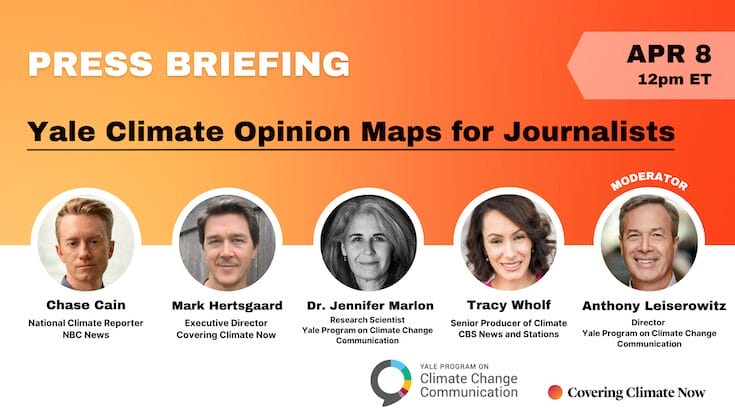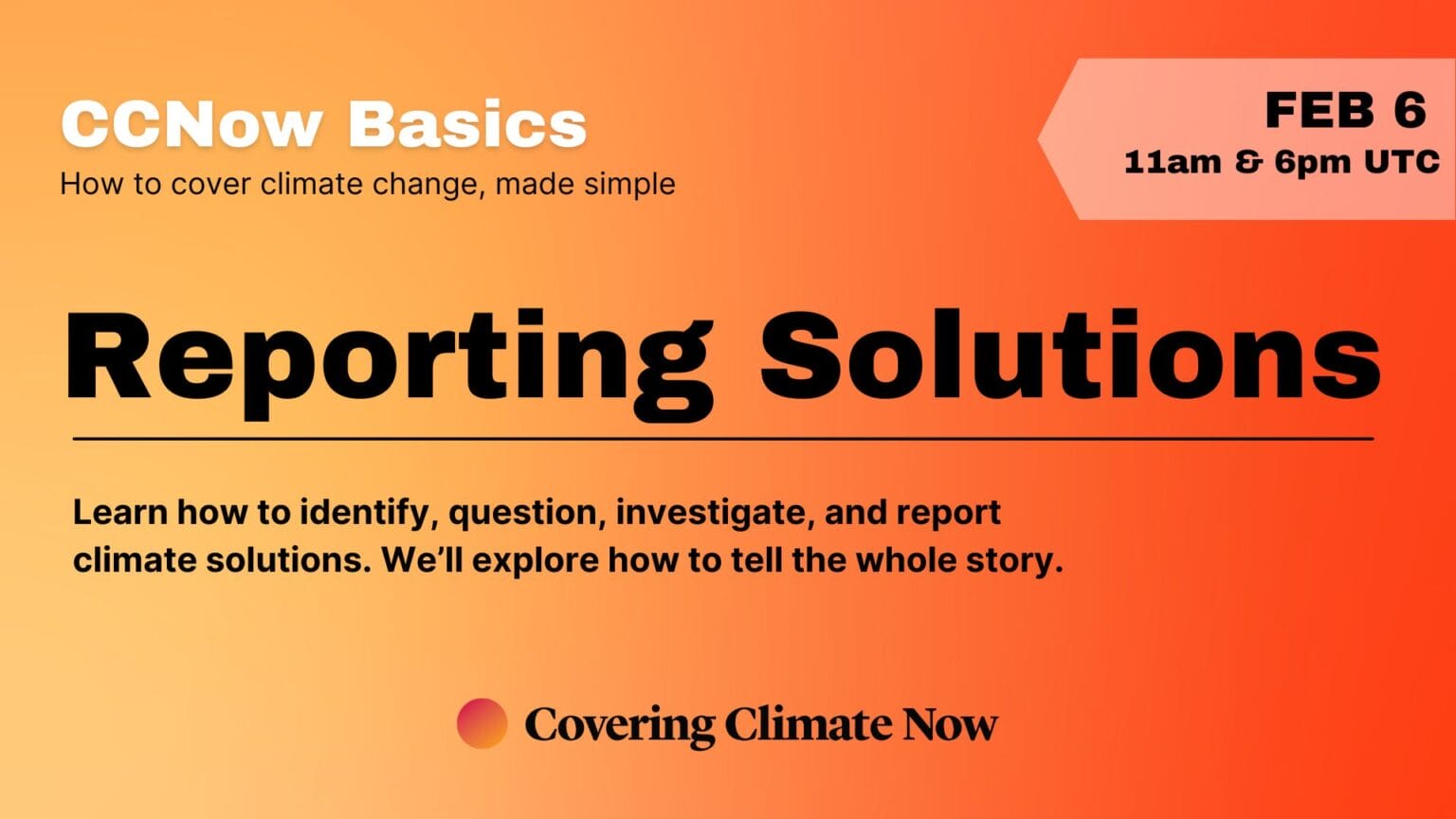When Covering Climate Now launched The 89 Percent Project in April, the goal was to draw attention to the fact that an overwhelming majority of the world’s people — 80 to 89%, according to scientific studies — want their governments to “do more” about climate change.
Now, in the next phase of the project, it’s time to explore who those people are.
Since The 89 Percent Project began four months ago, additional research — by the European Commission, Dynata, and the Yale Program on Climate Change Communication — has confirmed that roughly eight out of 10 people around the world support stronger climate action. Even in the US, a leading petrostate where climate disinformation has operated the longest, three out of four people (74%) want stronger action.
These figures put the lie to the one-dimensional caricature of people who care about climate change as left-wing or fringe. The sheer size of the climate majority means that it includes almost everyone — across political, economic, generational, racial, and other lines.
Phase 2 of The 89 Percent Project aims to humanize the numbers by reporting on the people comprising the climate majority. Who are they, where do they live, what do they do? Why do they care, and what do they want? Are they surprised to learn that they are, in fact, the majority?
The Guardian on Tuesday kicked things off, asking its readers to answer such questions, and CCNow invites journalists and news outlets everywhere to do likewise. Everyone is welcome to draw inspiration from The Guardian’s questions, adapting them for one’s own audience, augmenting them with “person in the street” interviews, and finding new ways to tell these stories through video, audio, and graphics. The Guardian will use the responses it gathers to craft short profiles of individuals who personify the climate majority. Again, fellow journalists and news outlets everywhere are invited to do the same.
In the coming days, CCNow will host a Talking Shop webinar to share how news organizations can report their own “the people behind the numbers” profiles. We invite everyone’s ideas and creativity. The overarching goal of this phase of The 89 Percent Project is to present a vivid, factually grounded portrait of the global climate majority in all its diversity and potential.
Like CCNow itself, this phase of The 89 Percent Project is a collaboration, a way to work together throughout the news industry to reframe the public narrative about the climate crisis and its solutions. For newsrooms, it is also a commercial opportunity. The climate majority represents not merely a sliver but the bulk of the global news audience. Here’s a chance to engage them — to let them see themselves reflected in news coverage and thus be more inclined to read, watch or listen to it.
The next phase of The 89 Percent Project starts now. We can’t wait to see what it produces.
From Us
Murdering the messengers. We can’t let this week pass without condemning the murder of six fellow journalists in Gaza. Al Jazeera correspondents Anas al-Sharif and Mohammed Qreiqeh and camera operators Ibrahim Zaher and Mohammed Noufal, along with freelancers Moamen Aliwa and Mohammad al-Khaldi, were killed on Sunday when Israel bombed a press tent near al-Shifa Hospital in Gaza City. Their deaths were deliberate, acknowledged Israeli authorities, accusing al-Sharif without evidence of being a Hamas agent. The attack boosted the number of Palestinian journalists killed in this war to 184 and underscored that journalism is increasingly under attack worldwide. Whether from state or vigilante violence, hateful social media posts, or coercive lawsuits, these attacks have the same goal: to evade accountability by keeping the public in the dark. We stand in solidarity with our fellow journalists everywhere and implore others to do the same.
Power of local. In our second Climate Blueprint roundtable, co-hosted with the Solutions Journalism Network, we’ll discuss the importance of local reporting for helping audiences understand the consequences of climate change. Tuesday, Aug. 19, at 12pm US Eastern Time. RSVP.
Training for individual journalists. Climate change touches every aspect of our lives. That’s why we’re launching the Covering Climate Now Academy, a free, live training program for journalists worldwide who want to strengthen their climate reporting across every beat. Spots are limited. Apply by September 8!
Training for newsrooms. CCNow is expanding its newsroom training initiatives to enhance climate coverage via local media across the US. The project, called The Climate Newsroom, builds on the success of our local TV training program and offers free, customized training for print, audio, and online newsrooms designed to help your outlet cover climate stories more effectively. Learn more.
Noteworthy Stories
Factcheck. An in-depth review of the Trump administration’s “critical review of impacts of greenhouse gas emissions on the US climate,” the 140-page report published by the US Department of Energy shortly before the Environmental Protection Agency announced it would seek to revoke the “endangerment finding,” finds more than 100 false or misleading claims. By Carbon Brief staff and dozens of climate scientists for Carbon Brief…
Biodiversity loss. Extreme heat, exacerbated by climate change, is a serious threat to tropical birds. A first-of-its-kind study finds that high temperature events reduced tropical bird populations by 25% to 38% between 1950 and 2020. By Lex Harvey for CNN…
Deadly heat. Scientists warned of a “molotov cocktail” of climatic conditions this week fueling vast wildfires in Italy, France, Croatia, and Spain. “The world has warmed by about 1.4C because of fossil fuel pollution“ and Europe “has warmed nearly twice as fast as the global average.” By Ajit Niranjan in The Guardian…
Deep sea dustup. President Donald Trump wants to greenlight the mining of minerals in international waters under an obscure US law that predates the 1994 United Nations Law of the Sea treaty, which the US never ratified. If he does, it would be the first large-scale mining venture in international waters. Last month’s International Seabed Authority annual gathering “devolved into a public airing of grievances against the US,” reports Clare Fieseler at Canary Media…
COP reform. Critics say the UN climate process needs a major overhaul due to slow progress on emission cuts, fossil fuel obsolescence, and the delivery of promised climate funding. Sixteen leading experts share how they think COPs could be reformed. By Josh Gabbatiss at Carbon Brief…
Long read. In Negros, Philippines, protest once stopped new coal plants. But as the climate crisis deepens, activists and religious leaders wonder if faith can still ignite resistance in a world on fire. By Biena Magbitang at Climate Tracker…
Dispatch #11 from the Climate Blueprint for Media Transformation: Funding
For several months, we’ve been periodically sharing standout insights from the Climate Blueprint for Media Transformation, a collaboration between CCNow and the Solutions Journalism Network.
Fourteen million dollars raised for climate coverage over 10 years? That’s a pretty successful fundraising campaign, and it’s what Rachel White helped achieve at The Guardian. While it took an extensive effort, the takeaways are usable by any newsroom looking to secure philanthropic funding for its climate journalism.
Focusing on impact helps funders understand what they’re investing in and get excited about supporting it; thinking outside the box when looking for potential donors gives newsrooms more options and allows them to build on mutual interest; and … be bold in your ask! Funders know you want money, so be clear about how much you need and what it’s for.
“In a time of ever-tightening newsroom budgets and endless demands on those budgets,” White says, “philanthropy can play a critical role in supporting independent climate journalism.” Read more.
Research
Scandi heatwave. A new study finds that “climate change made the [mid-July] two-week heatwave that led to overcrowded hospitals, algal blooms, wildfires and sightings of reindeer in urban areas in Norway, Sweden and Finland about 2°C hotter and at least 10 times more likely.” By World Weather Attribution staff. Read the report.
Jobs, Fellowships & Awards
Grist and The Salt Lake Tribune are seeking a reporter to cover the impacts of climate change in Utah. Mongabay is looking for an investigations editor (remote). The Oxford College Journalism Network is looking for a director of journalist programmes (Oxford, UK).
Investigative Reporters and Editors (IRE) is accepting applications for the Chauncey Bailey Journalist of Color Investigative Reporting Fellowship. Apply by September 1. Learn more + apply.
Enter the SEJ Awards for Reporting on the Environment Celebrating the best in environmental journalism across 10 categories — from investigative projects to outstanding student work! Now open through September 2; late deadline: September 16. Enter today.
The Uproot Project is excited to host the fourth annual Journey of a Story exhibit, a celebration of why diverse voices are essential to environmental reporting. This year’s theme is Climate, Politics, and Trust in the Media — and will spotlight stories featuring innovative, community-driven responses to climate challenges. Learn more + submit your story.
The IP List 2025 is a non-profit project that surfaces and promotes extraordinary journalism available for adaptation in the film and television market. If you’ve ever reported a story that you think would make an amazing adaptation on screen, learn more about The IP List 2025 and nominate your reporting by September 1. Sign up for an August 20 informational session or contact Christine McLaren: christine[at]pathoslabs[dot]org to learn more about the process.



